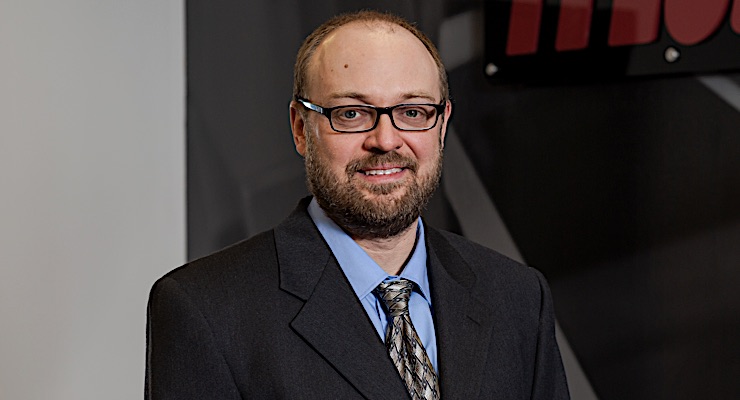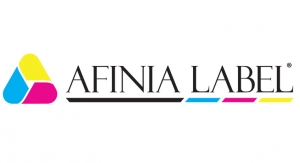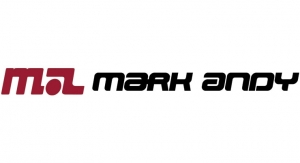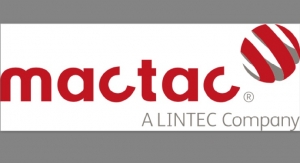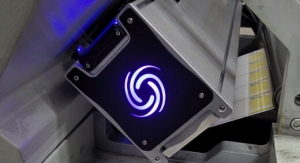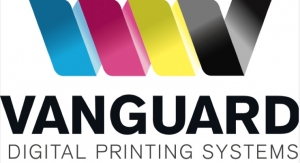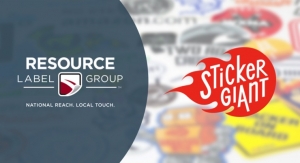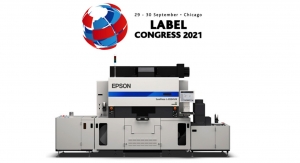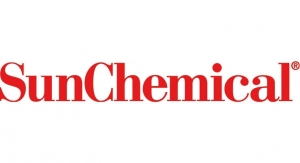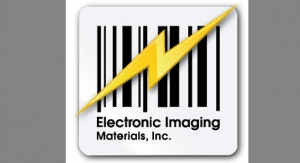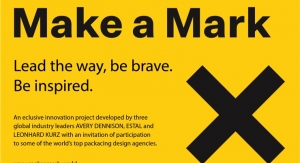Greg Hrinya, Editor11.09.20
David Medlar, vice president of Digital Business Unit, Mark Andy, has spent more than 21 years at the company. A mechanical engineer by trade, Medlar grew within Mark Andy – eventually leading the company’s operations facility. Five years ago, Medlar transitioned to the digital side of Mark Andy’s business.
Medlar sits down with L&NW to discuss the latest trends in the digital and hybrid printing markets, in addition to Mark Andy’s response to consumer demand.
Q: How did Mark Andy get into the digital printing market?
When Mark Andy first got into digital, especially with my background in engineering, there was such a desire in the market for a digital product. We felt like we had to transform the business over time to digital. Eventually, even if it’s 30 years from now, some 90% of the presses in these label converting plants will have some sort of digital capability. At the time, there was a willingness for a mature industry to look at a new type of technology and jump right in, and that was an interesting dynamic for us.
For those familiar with Mark Andy’s history, we really got into digital around 2012 with our first inkjet offering. Four years ago, in 2016, we added to our portfolio with our Digital One toner-based machine.
Q: How does Mark Andy perceive the market for digital and hybrid presses?
We really see the market, month over month and year over year, increasing as more people are becoming intrigued by digital. In many ways, they’re more interested in digital hybrid technology – meaning they want the ability to have a productive machine that allows for finished labels. We just see a lot of growth over the next several years, and that’s where much of our R&D and product watch activities are being focused on.
The industry continues to realize that digital printing is really the way to satisfy your customers’ needs. The demand for printed products – in many segments – has gone through the roof. In turn, the demand for digital hybrid needs, which can accommodate so many different markets, is really strong at this point.
Q: How can digital printing serve as a complement to flexo?
They absolutely complement each other, because every label shop has jobs with different run lengths. So, why choose between flexo or digital? The decision-making process comes down to your cost to print or your ROI for that piece of equipment, and one of the key factors is run lengths. Every label shop is going to have long runs with more and more specialization and regionalization of their products. Some of those run lengths, even when producing the same type of label, require the need for shorter runs, and digital helps complement that activity at your business.
Q: What are the newest additions to Mark Andy’s digital printing lineup?
We have several different options here at Mark Andy. We have the Digital Pro product line, which is the second generation of our Digital One product line. Digital One was launched in 2016, and since then we have revamped it and added much more hybrid capability, with the additional print station before the digital engine with inline capabilities. This provides added converting options, and this has hit the market in the right spot because people see this added flexibility built around the robustness of the toner-engine. This has done well for us over the summer.
The second development has been our Digital Series HD. This was launched about two years ago, and this year we really started to gain a tremendous amount of traction on the inkjet side of the market. This is a machine that can print at up to 240 fpm with full hybrid capability, operating essentially inline with a Performance Series chassis. For people who are looking into this machine, I would tell them, ‘This press allows you to produce your labels in the most cost-effective manner possible.’ This has really turned out to be a great machine for us, with a tremendous amount of demand. As some of the run lengths have come down, this equipment allows more people to think seriously about inkjet and transition more of their business to that technology.
Q: What are the benefits of going with a hybrid printing solution?
It all comes down to your cost to produce the labels and your return on investment for purchasing the machine. When you think about a hybrid, you’re going to have the most cost-effective way to produce your label because the technology is the most productive with the least amount of labor required.
As you run your calculations in a serious ROI model, you’re going to find that this is the right way to invest. As we approach customers and talk dollars and sense with them, they realize this is the most productive way to accomplish their goals.
Q: How has customer feedback driven the way Mark Andy has engineered its presses?
We want to develop presses that customers want to buy, so their feedback has a tremendous impact on our operations. We have very large service, sales and marketing teams, and we talk to these customers and get feedback from each department all the time. Our product management and engineering teams are constantly thinking of ways to take that feedback and improve the machines, allowing customers to continue benefiting from our products.
Our customers always want to be able to run faster – they want more speed. They also want more throughput, and they want a machine that continues to be very robust for them, meaning they don’t want a lot of downtime. Whether it’s our flexo or digital machines, Mark Andy is always looking to improve the little things that add up to productivity gains for our customers.
Q: What do you envision in the future for digital printing?
Digital printing is always going to be about maintaining color and having color consistency, as well as running as fast as you can while producing quality labels. Mark Andy, in its development cycle, is focused on making a really strong piece of equipment that allows our customers to be productive and deliver that quality. We’re continuing to create the least number of steps needed to produce a label – inline – on a hybrid piece of equipment.
Medlar sits down with L&NW to discuss the latest trends in the digital and hybrid printing markets, in addition to Mark Andy’s response to consumer demand.
Q: How did Mark Andy get into the digital printing market?
When Mark Andy first got into digital, especially with my background in engineering, there was such a desire in the market for a digital product. We felt like we had to transform the business over time to digital. Eventually, even if it’s 30 years from now, some 90% of the presses in these label converting plants will have some sort of digital capability. At the time, there was a willingness for a mature industry to look at a new type of technology and jump right in, and that was an interesting dynamic for us.
For those familiar with Mark Andy’s history, we really got into digital around 2012 with our first inkjet offering. Four years ago, in 2016, we added to our portfolio with our Digital One toner-based machine.
Q: How does Mark Andy perceive the market for digital and hybrid presses?
We really see the market, month over month and year over year, increasing as more people are becoming intrigued by digital. In many ways, they’re more interested in digital hybrid technology – meaning they want the ability to have a productive machine that allows for finished labels. We just see a lot of growth over the next several years, and that’s where much of our R&D and product watch activities are being focused on.
The industry continues to realize that digital printing is really the way to satisfy your customers’ needs. The demand for printed products – in many segments – has gone through the roof. In turn, the demand for digital hybrid needs, which can accommodate so many different markets, is really strong at this point.
Q: How can digital printing serve as a complement to flexo?
They absolutely complement each other, because every label shop has jobs with different run lengths. So, why choose between flexo or digital? The decision-making process comes down to your cost to print or your ROI for that piece of equipment, and one of the key factors is run lengths. Every label shop is going to have long runs with more and more specialization and regionalization of their products. Some of those run lengths, even when producing the same type of label, require the need for shorter runs, and digital helps complement that activity at your business.
Q: What are the newest additions to Mark Andy’s digital printing lineup?
We have several different options here at Mark Andy. We have the Digital Pro product line, which is the second generation of our Digital One product line. Digital One was launched in 2016, and since then we have revamped it and added much more hybrid capability, with the additional print station before the digital engine with inline capabilities. This provides added converting options, and this has hit the market in the right spot because people see this added flexibility built around the robustness of the toner-engine. This has done well for us over the summer.
The second development has been our Digital Series HD. This was launched about two years ago, and this year we really started to gain a tremendous amount of traction on the inkjet side of the market. This is a machine that can print at up to 240 fpm with full hybrid capability, operating essentially inline with a Performance Series chassis. For people who are looking into this machine, I would tell them, ‘This press allows you to produce your labels in the most cost-effective manner possible.’ This has really turned out to be a great machine for us, with a tremendous amount of demand. As some of the run lengths have come down, this equipment allows more people to think seriously about inkjet and transition more of their business to that technology.
Q: What are the benefits of going with a hybrid printing solution?
It all comes down to your cost to produce the labels and your return on investment for purchasing the machine. When you think about a hybrid, you’re going to have the most cost-effective way to produce your label because the technology is the most productive with the least amount of labor required.
As you run your calculations in a serious ROI model, you’re going to find that this is the right way to invest. As we approach customers and talk dollars and sense with them, they realize this is the most productive way to accomplish their goals.
Q: How has customer feedback driven the way Mark Andy has engineered its presses?
We want to develop presses that customers want to buy, so their feedback has a tremendous impact on our operations. We have very large service, sales and marketing teams, and we talk to these customers and get feedback from each department all the time. Our product management and engineering teams are constantly thinking of ways to take that feedback and improve the machines, allowing customers to continue benefiting from our products.
Our customers always want to be able to run faster – they want more speed. They also want more throughput, and they want a machine that continues to be very robust for them, meaning they don’t want a lot of downtime. Whether it’s our flexo or digital machines, Mark Andy is always looking to improve the little things that add up to productivity gains for our customers.
Q: What do you envision in the future for digital printing?
Digital printing is always going to be about maintaining color and having color consistency, as well as running as fast as you can while producing quality labels. Mark Andy, in its development cycle, is focused on making a really strong piece of equipment that allows our customers to be productive and deliver that quality. We’re continuing to create the least number of steps needed to produce a label – inline – on a hybrid piece of equipment.

